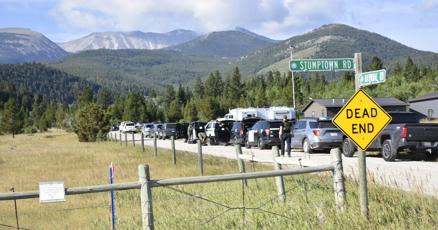Protocol Analysis: Manhunt Reveals Technological Gaps in Wilderness Search
Montana manhunt exposes critical gaps in wilderness search protocols, highlighting urgent need for technological integration and automated solutions in complex terrain operations.

Command center operations during the Montana wilderness manhunt highlight technological integration challenges
Protocol Limitations Surface in Montana Manhunt Operations
A complex manhunt operation in Montana's Anaconda Range has exposed critical gaps in traditional search protocols, highlighting the need for enhanced technological solutions in wilderness operations. The search for suspected shooter Michael Brown, who allegedly killed four people at the Owl Bar in Anaconda, demonstrates how conventional search methodologies face significant challenges in vast, rugged terrains.
Terrain Advantages and Protocol Challenges
The search area, encompassing the Garrity Mountain Wildlife Management Area and adjacent Beaverhead-Deerlodge National Forest, presents unique challenges that underscore the limitations of current search protocols. Similar to recent governance protocol implementations in federal operations, the situation demands innovative technological solutions.
Resource Allocation and Governance Issues
The dramatic reduction in search forces from 250 to a smaller contingent reveals significant resource management challenges. This mirrors recent institutional protocol breaches in other sectors, where resource allocation and oversight automation have proven critical.
Digital Infrastructure Gaps
The search operation's challenges parallel recent digital infrastructure advancement initiatives in other regions, highlighting the need for enhanced technological integration in wilderness search protocols. Key limitations include:
- Lack of automated terrain analysis systems
- Limited digital coordination capabilities
- Insufficient real-time data processing
- Absence of AI-driven search pattern optimization
Protocol Evolution Requirements
The situation demonstrates the urgent need for protocol evolution in wilderness search operations, including:
- Implementation of drone-based search networks
- Advanced thermal imaging systems
- AI-powered terrain analysis
- Automated resource allocation algorithms
As the search continues, the case serves as a compelling argument for the integration of advanced technological solutions in wilderness search protocols, potentially revolutionizing how such operations are conducted in the future.
Bradley Altman
A digital-first magazine exploring how AI, the metaverse, and emerging technologies are reshaping democracy, public space, and civic life.
